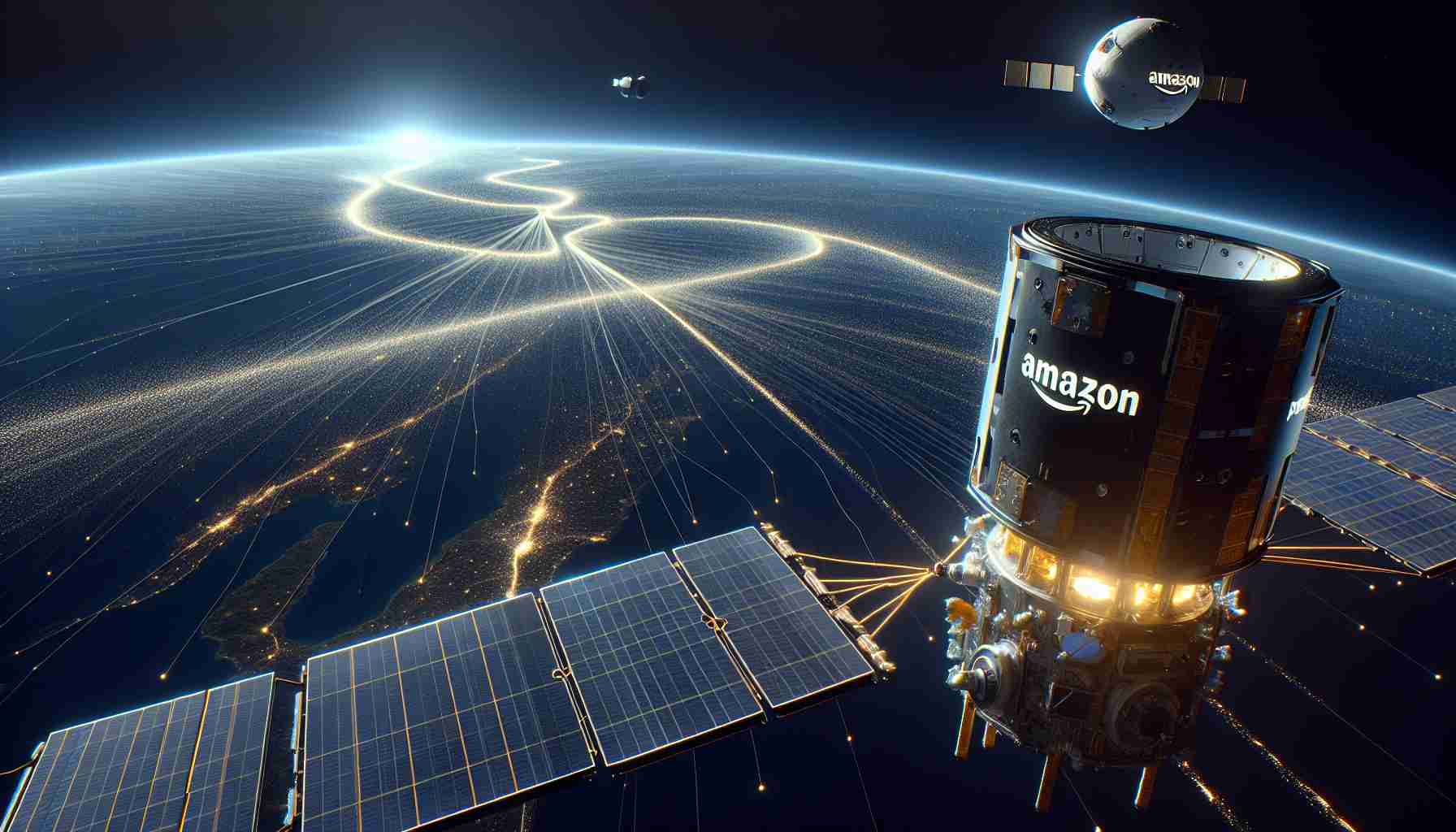
Analysts from Bank of America have expressed skepticism about the immediate profitability of Amazon’s satellite endeavor, known as Project Kuiper, indicating that meaningful returns may take years to materialize. This ambitious initiative intends to establish a network of over 3,000 satellites in low Earth orbit to provide broadband internet services.
Amazon is targeting the launch of its initial satellite batch by late 2024, with hopes to roll out commercial services soon after. The significance of this project is underscored by the fact that approximately 2.6 billion individuals globally still lack reliable internet access. By 2032, the potential revenue for global broadband is projected to surpass $26 billion, making this venture particularly appealing.
Furthermore, the integration of Project Kuiper with Amazon’s extensive logistics network could enhance service delivery, especially for both enterprise and government customers. However, despite these optimistic prospects, the project is expected to incur short-term financial setbacks, potentially stalling immediate gross revenue increases for Amazon, which boasts a market capitalization of more than $1.8 trillion.
Additionally, Project Kuiper will enter a competitive arena, facing challenges from established players like Starlink. The endeavor will require considerable initial investments and ongoing operational expenses, with estimates suggesting it will need to attract around seven million users to reach profitability. As a result, it may remain a challenging journey for Amazon’s latest technology ambition.
Amazon’s Project Kuiper: Navigating Challenges and Opportunities in the Satellite Internet Space
Amazon’s Project Kuiper is an ambitious venture aimed at bridging the digital divide by launching a constellation of over 3,000 satellites in low Earth orbit (LEO). While the project has potential to significantly enhance global internet access, the undertaking is not without its challenges. As Amazon gears up for the launch of its first satellite batch by late 2024, key questions and challenges arise.
Key Questions and Answers
1. What specific technologies will Project Kuiper utilize?
Project Kuiper aims to leverage advanced phased-array antennas and optical communications technology. This could enhance data transmission speeds and capacity, making the broadband service competitive against existing providers.
2. How is Project Kuiper being funded?
Amazon has committed substantial capital, estimating costs in the billions for satellite development and launches. Additionally, partnerships with established aerospace companies like United Launch Alliance (ULA) will be pivotal for initial satellite deployments.
3. What regulatory hurdles does Project Kuiper face?
Navigating the complex landscape of global telecommunications regulations will be crucial. The Federal Communications Commission (FCC) approved Kuiper’s operations in July 2020, but Amazon must also comply with international regulations as it seeks to offer global internet access.
Key Challenges and Controversies
Despite its promising goals, Project Kuiper faces notable challenges:
– Competition: Kuiper will compete not only with Starlink but also with other emerging satellite networks, such as OneWeb and Telesat. The saturation of the satellite internet market presents a significant hurdle for Amazon.
– Technological Risks: The ambitious scope of creating a vast satellite network comes with inherent technological risks, including potential delays in satellite deployment and malfunctioning hardware.
– Space Debris Concerns: The increase in LEO satellites raises environmental concerns regarding space debris. The industry is under scrutiny for ensuring that satellite operations do not lead to overpopulation in orbit.
Advantages and Disadvantages
Advantages:
– Increased Internet Access: By providing connectivity to underserved regions, Project Kuiper has the potential to transform lives and businesses, fostering economic growth in those areas.
– Synergies with Amazon Services: The integration of broadband services with Amazon’s existing ecosystem could enhance customer experiences, particularly for e-commerce and cloud computing solutions.
– Innovation in Satellite Technology: Project Kuiper may drive advancements in satellite technology and services, benefiting the entire sector.
Disadvantages:
– High Initial Investment: The project requires a massive financial outlay before any returns can be realized, posing risks in terms of cash flow and profitability.
– Market Uncertainty: The rapidly evolving competition and regulatory environment create uncertainties that could impact Kuiper’s market positioning.
– Long-Term Viability: The sustainability of the business model in the face of ongoing operational costs and aggressive competition remains to be seen.
As Project Kuiper moves forward, its journey stands as a testament to the complexities of launching innovative technologies in the rapidly evolving telecommunications space. Its success will likely hinge on overcoming these challenges while strategically navigating the competitive landscape.
For more about Amazon’s ventures and innovations, visit Amazon.



